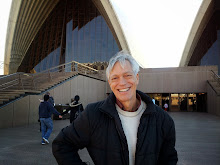Here are Lorne's notes on Alan Houtchens’ article “Romantic Composers Respond to Challenge and Demand” in Peyser’s The Orchestra, which he presented in class as a report last week. (Thank you Lorne!)
External Factors Acting on Romantic (19th-century) Composers
Prepared by Lorne Dechtenberg
I. Economic Demands
A. Need to make a living
• Result – composers often worked multiple jobs
• Such jobs included conducting (e.g., Mendelssohn), being a critic (e.g., Schumann), and teaching (many did this)
B. Pleasing publishers
• Mass consumption of written music was by amateurs who played at home (often on a keyboard instrument)
• Publishers therefore wanted easier pieces for either solo piano or small chamber groups (duo, trio) that included piano (or songs)
C. Pleasing live audiences
• Concert patrons still enjoyed watching virtuosic performances
• Orchestras therefore wanted difficult, virtuosic pieces
II. Cultural and Artistic Trends
A. The development of the Pianoforte (the modern piano)
• Constructed progressively better and with a louder and better sound
• Composers began to incorporate it into the orchestra (not just concerti)
B. Composer-Conductors were particularly revered by Romantic audiences
• “The composer whose inner ear is the judge of his composition works in quite a different way. This inner ear is an amazingly able judgeof musical shapes – something peculiar to the art of music and a sacred mystery which the layman cannot fathom.” (Weber)
C. The creation of the valved horn
• Allowed the playing of pitches from more than one harmonic series
• Gave the horn more flexibility, but a new sound
• Difference among composers’ reactions
o Brahms hated the color of the valved horn
o Mahler loved it (called for all 7 horn players to stand in the finale of his Symphony No.1)
o Weber also liked it, although he experimented with his own sounds (his Concertino in E Minor calls for the player to sing into the horn while playing!)
D. Opera (perhaps the most experimental genre – as it had been in the Baroque)
• French Grand Opera – combined singing, acting, dance, pantomime, and special effects
• Opera was the first genre to embrace the valved horn (and valved trumpet)
• Also began using other instruments for color (e.g., Bass Clarinet, Harp, English Horn)
• Dvořák called for a contrabass clarinet, but there wasn’t one in Bohemia (modern-day Czech); it had to be sent from Paris, and the player couldn’t play it because he knew only the German fingering system!
E. The conservatory infrastructure
• Turned out highly trained musicians to play in professional orchestras
• This meant that composers could write whatever they want with the expectation that professional performers would be able to play it.
III. Sociopolitical Developments
A. The rise of music criticism
• People other than composers, performers, and audiences now had a say in the popular success or failure of a composer or work
• The disapproval by some critics of the extensive experimentation during this time may had contributed to the rift between composers and mass audiences
B. Nationalism among composers
• As the available body of literature began to expand, composers sought to set their own music apart by incorporating folk stories, characters, and music from their respective homelands
• Der Freischütz (Weber / Germany), Finlandia (Sibelius / Finland) Slavonic Dances (Dvořák / Bohemia), A Life for the Tsar (Glinka / Russia) Peer Gynt (Grieg / Norway), and many others
C. Nationalism among orchestras
• With the rise of international music criticism, many orchestras wanted to garner reputations outside their borders
• Most orchestras already had a unique sound by virtue of the instrument types (e.g., size and shape of brass bores), fingering patterns (e.g., French vs. German), and techniques (e.g., amount and speed of vibrato)
• Some still sought more notoriety – “As conductor of the court orchestra at Meiningen from 1880 to 1885 Hans von Bülow fashioned a distinctive sound quality and performance capability for that body by requiring all of his musicians to stand during performances and by insisting on the use of five-string basses, Hermann Ritter’s larger alta violas, and pedal timpani.” (Houtchens)
This outline is based in part on Alan Houtchens’ article “Romantic Composers Respond to Challenge and Demand” in Peyser’s The Orchestra.
Tuesday, October 23, 2007
Subscribe to:
Post Comments (Atom)

No comments:
Post a Comment